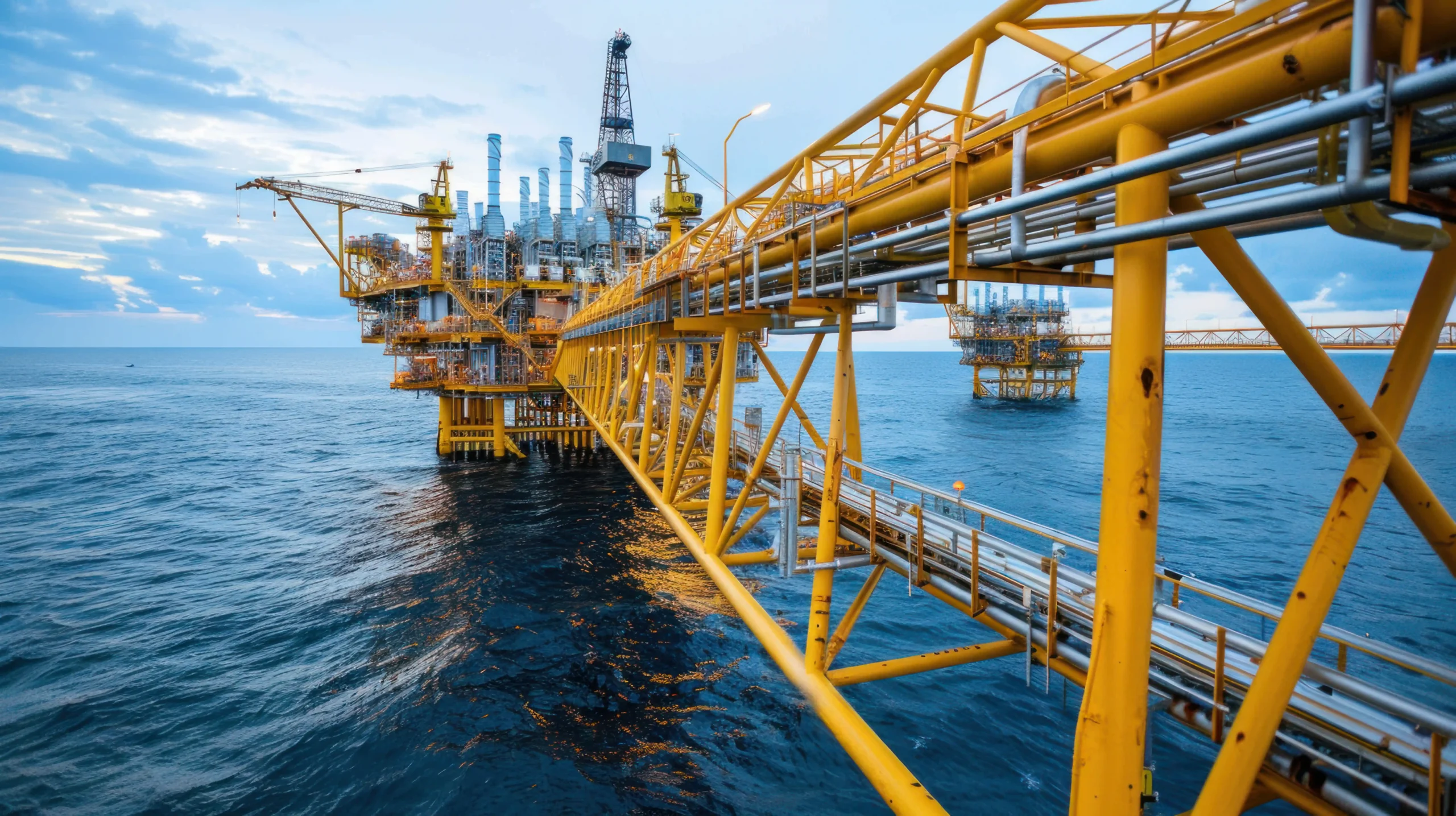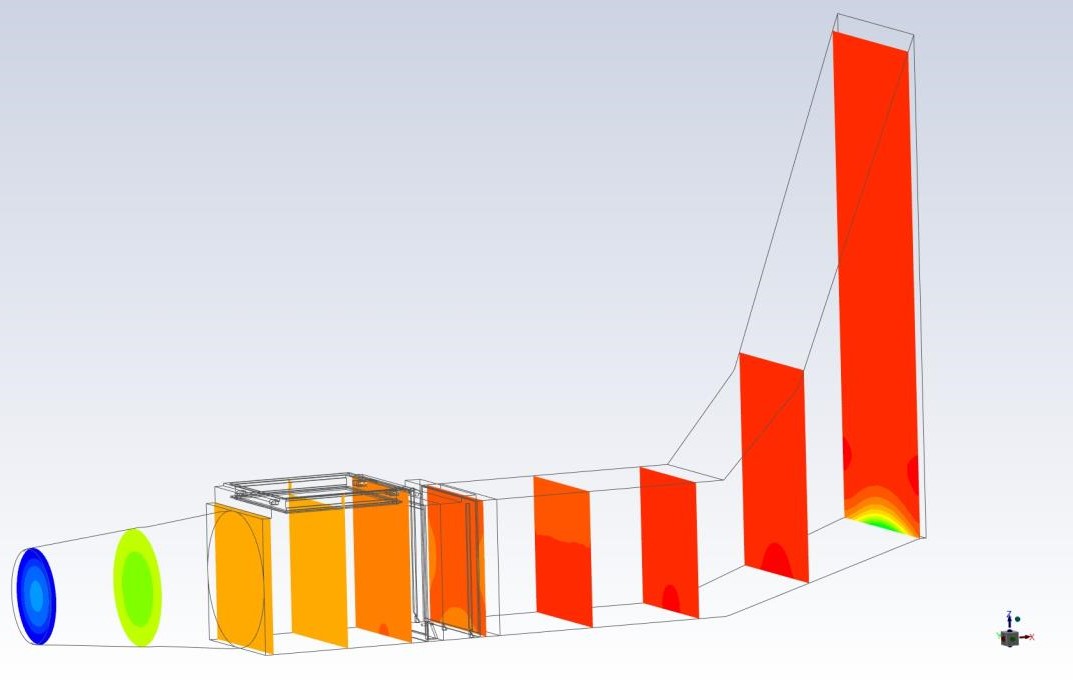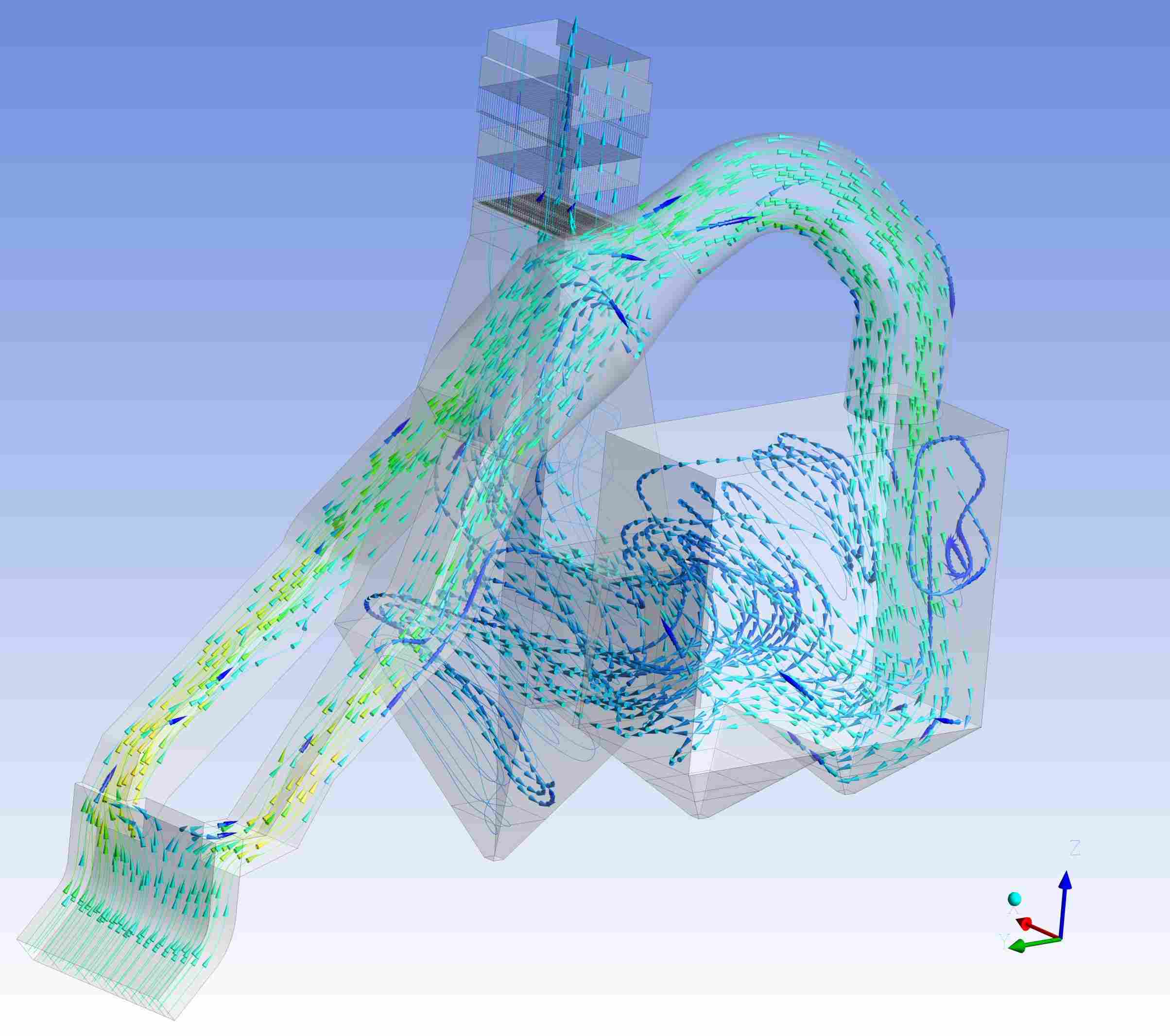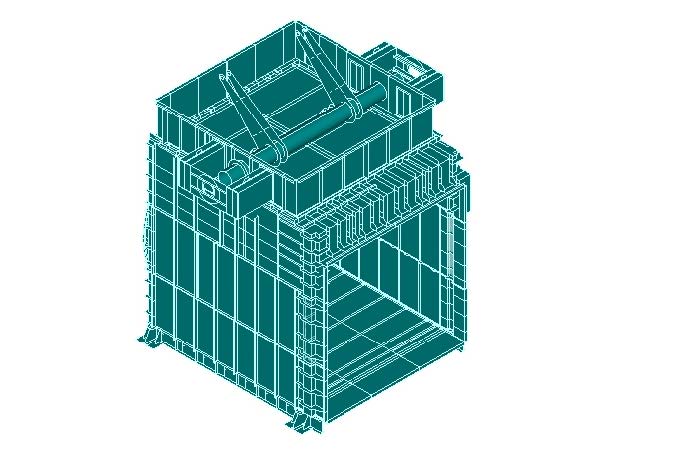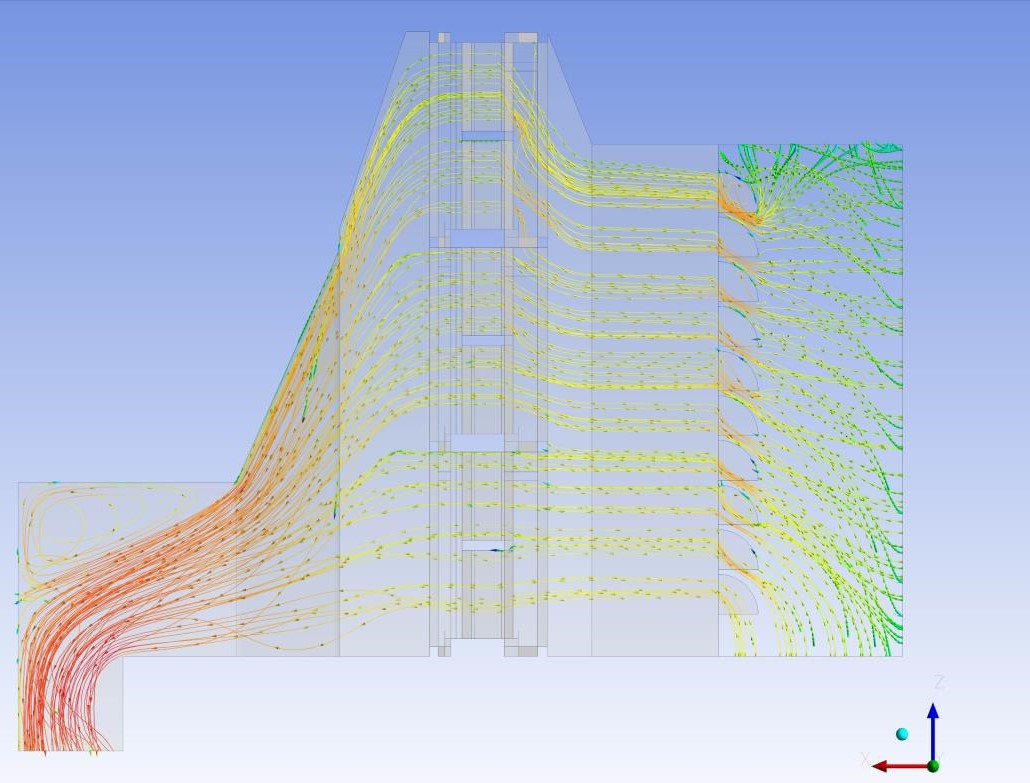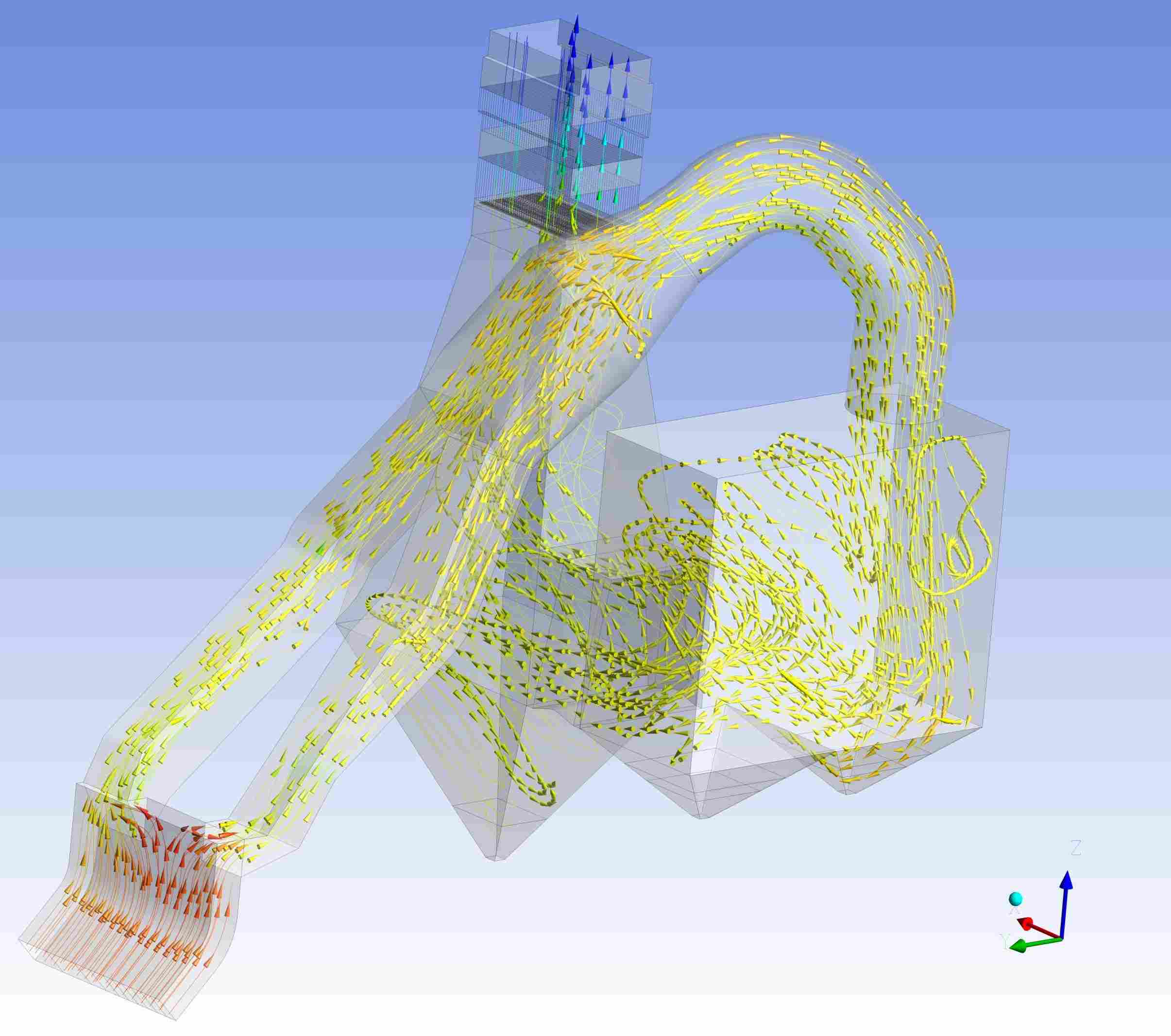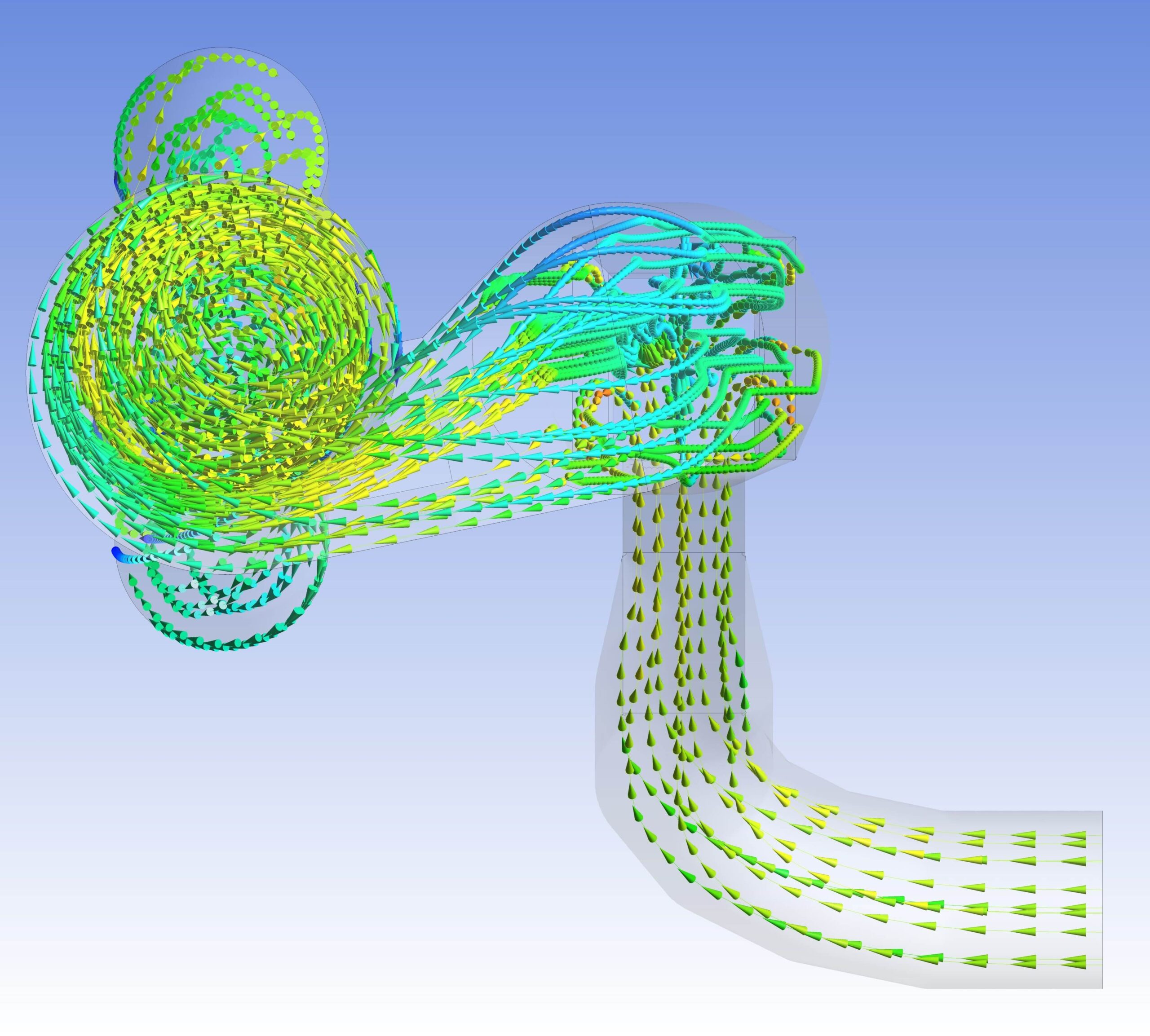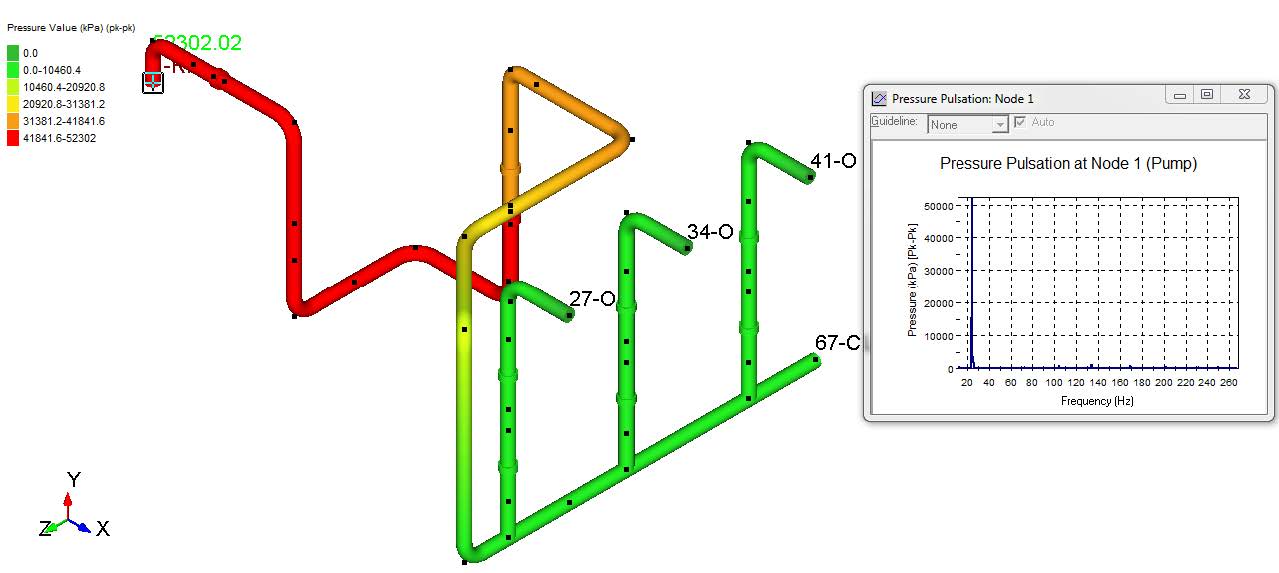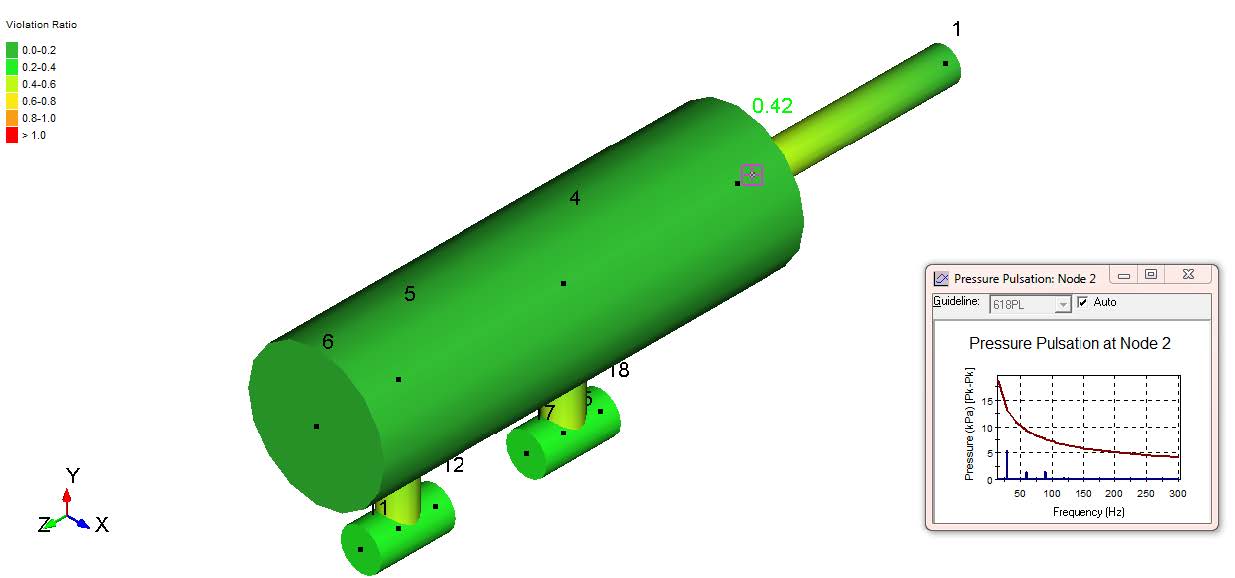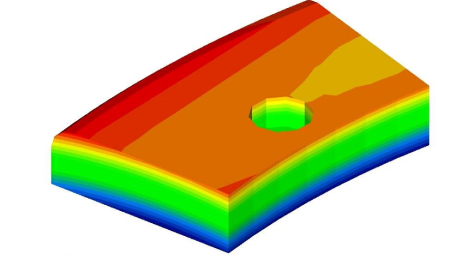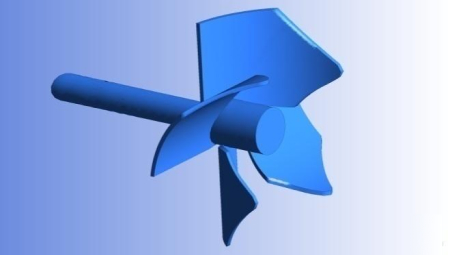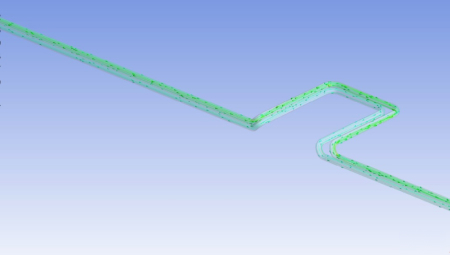At Mechartés, we assess and mitigate vibration-induced fatigue in process pipework in accordance with the Energy Institute’s AVIFF guidelines. Our work covers the principal excitation mechanisms encountered in oil & gas and petrochemical facilities and follows EI’s qualitative/quantitative Likelihood of Failure (LoF) workflow, plus targeted field measurement and detailed analysis where required.
FIV or Flow-Induced Vibration is used generically for vibrations driven by fluid flow; in EI practice, two distinct flow-driven mechanisms are typically considered:
- Flow-Induced Turbulence (FIT) on main lines (broadband, usually <~100 Hz), arising at tees, reducers, bends, partially closed valves, and other discontinuities. Primary fatigue risk is often at small-bore connections (SBCs).
- Flow-Induced Pulsation (FIP)/dead-leg vortex effects (a subset of FIV), where flow past branches/dead legs excites discrete frequencies.
EI method: start with qualitative LoF screening from process conditions (e.g., fluid kinetic energy, geometry, operating factors), then, where risk is non-negligible, perform quantitative LoF and/or site vibration surveys (pipe wall RMS velocity) to EI acceptance criteria, prioritise mitigations accordingly.
AIV or Acoustic Induced Vibration is a distinct mechanism where intense acoustic energy generated downstream of pressure-reducing devices (e.g., relief/letdown/control valves, orifice plates) can excite circumferential “shell” modes of thin-wall pipe, causing high-cycle fatigue, typically at tees, reducers, and welds in gas lines. Screening uses acoustic power/level correlations (e.g., Carucci–Mueller) and thickness/diameter checks (e.g., Eisinger D/t-based criteria) as referenced by EI. Detailed checks and mitigations (geometry, wall-thickness changes, staged pressure drops, low-noise trims) follow when screening flags elevated risk.
Mechartés EI-aligned Workflow
- Qualitative LoF screening (Design/Operations)
- Mechanism-specific screening per EI for FIT/FIV (main lines & SBCs) and AIV (pressure-drop sources in gas).
Rank by LoF to focus effort and budget.
- Mechanism-specific screening per EI for FIT/FIV (main lines & SBCs) and AIV (pressure-drop sources in gas).
- Quantitative assessment
- FIT/FIV: compute main-line and SBC LoF using EI equations; where needed, perform modal/FE analysis to check local stresses and connection vulnerabilities.
- AIV: compute acoustic power/level from process data (pressure drop, flow, thermophysical properties) and apply EI-referenced criteria (e.g., Carucci–Mueller/Eisinger) for wall-thickness and geometry limits.
- Field vibration surveys (as-built)
- Pipe wall RMS velocity measurements and spectral analysis to classify EI severity bands and separate broadband FIT from discrete or machinery-related excitations.
- Mitigation & design changes
- For FIT/FIV: SBC bracing, support/stiffness upgrades, geometry cleanup (short dead-legs, better branch details), flow conditioning.
- For AIV: noise-attenuating trims, staged pressure reduction, wall-thickness/geometry adjustments, and layout changes near sources.
The EI guideline is the industry’s go-to, risk-based framework used from design through operations to prevent vibration-induced fatigue failures and loss of containment. It defines the LoF process, field survey approach, and corrective action hierarchy. We pair EI with client codes/practices (e.g., API RP 574 for inspection emphasis) where relevant.
